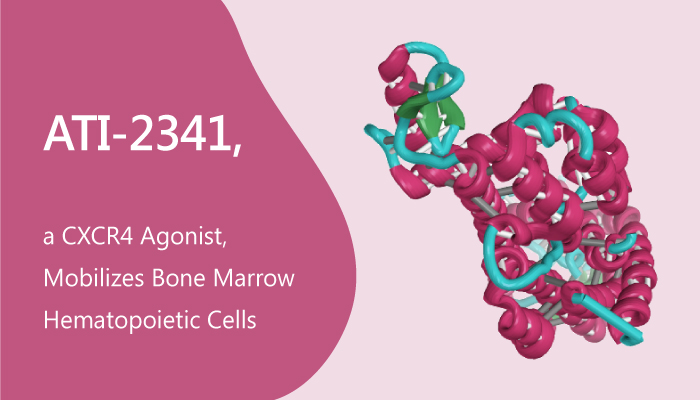G proteins (guanine nucleotide-binding proteins) are proteins inside cells, acts as molecular switches. These proteins are members of GTPases family. They engage in transmitting signals from various stimuli outside a cell to its interior. There are many types of G proteins, such as Gαs, Gαi, Gαq, and Gα12. These also have different subtypes.
CXCR4 (C-X-C chemokine receptor type 4) is a common α-chemokine receptor, also called fusin or CD184. It is specific for the ligand stromal-derived-factor-1 (SDF-1 also known as CXCL12). CXCR4 involves in HIV infection, human implantation. Its ligand SDF-1 participates in hematopoietic stem cell homing to the bone marrow and in hematopoietic stem cell quiescence.
According to the above, we know that the ligand of CXCR4 may become a mobilizer of bone marrow polymorphonuclear neutrophils.
In an article, Julie Quoyer, et al reported an agonist of CXCR4, ATI-2341. ATI-2341 is a pepducin, acts as a biased ligand, and targets CXCR4.

In order to evaluate whether ATI-2341 favors Gαi activation or Gα13, researchers underwent several assays in cells. As a result, ATI-2341 enhances Gαi activation instead of Gα13.
In addition, ATI-2341 weakly enhances recruitment of β-arrestin to CXCR4. It is also a weak partial agonist of GRK2 and GRK3 engagement.
In conclusion, ATI-2341 is an allosteric CXCR4 agonist, mobilizes bone marrow hematopoietic cells. It represents a unique CXCR4-targeted agonist with unique therapeutic potential.
References:
1. Quoyer J, et al. Proc Natl Acad Sci U S A. 2013 Dec 24;110(52):E5088-97.
2. Tchernychev B, et al. Proc Natl Acad Sci U S A. 2010 Dec 21;107(51):22255-9.